PORTAFOLIO




Portafolio 2020 - 2022
Tralka Estudio
Talca | Chile www.tralkaestudio.com
Textos | Texts
Leonardo Cancino
Victoria Flores Franco Caballero
Diseño de Portada | Cover Design
Leonardo Cancino
Editor | Editor
Victoria Flores Franco Caballero
Diseño Editorial | Editorial Design
Ricardo Vásquez
Traducción | Translation Victoria Flores
Septiembre | 2022
1. Presentación | Presentation
Encuadernación Artística | Artistic Bookbiding
Proyectos | Projects
3.1 Norte Sur Patagonia
Viaje en Poesía - Voyage en Póesie
Lenguas y Engranajes
Vivencias de una Experiencia
Escuela de Oficio | Craft School
Casa Taller | Workshop House
Línea Gráfica | Graphics
Materialidad | Materials
Proveedores | Suppliers
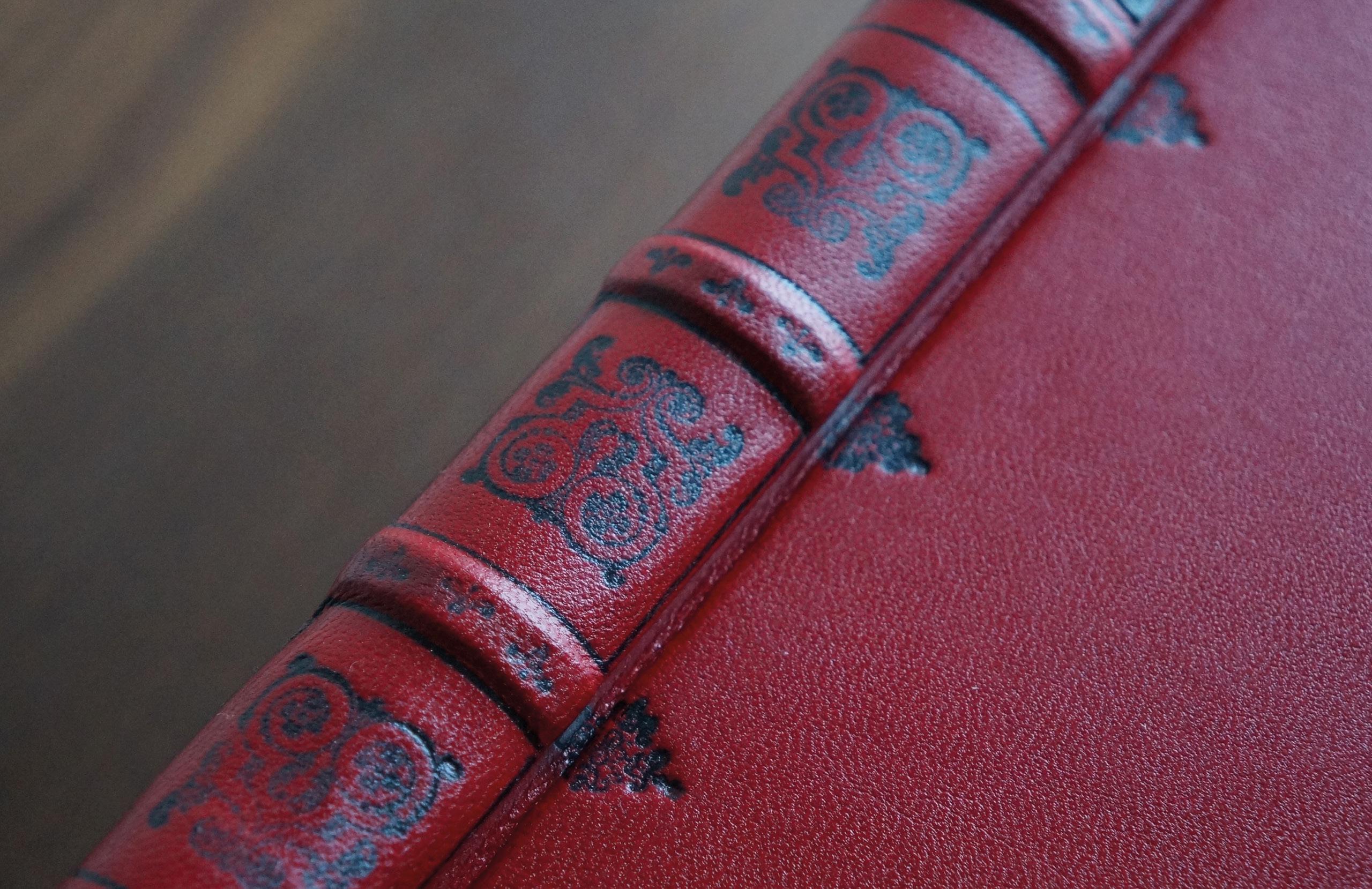
Actualmente, el libro y sus múltiples extensiones de soporte se observan como fósiles atemporales, objetos con fecha de caducidad ante el frenesí digital y su masividad a través de dispositivos conectados a redes de información instantánea.
La rapidez con la cual se ha precipitado la sociedad moderna a realizar sus actividades cotidianas ha dificultado detenernos y reflexionar: ¿es posible balancear el acceso digital con la aproximación análoga de los objetos? ¿Estaremos en tránsito del homo faber al homo digitalis? ¿Renunciaremos a nuestra condición sensitiva y palpable en desmedro de lo digital?
Podrán surgir múltiples respuestas a las interrogantes anteriores; no obstante, creemos, con inocente entusiasmo, que la integración entre lo digital y análogo puede erigirse como una nueva forma de creación, colaboración y tributo del libro, rescatando y preservando así los valiosos antecedentes históricos con los que cuenta el oficio.
De esta forma, y cuando se pretende explotar sin límites la información, puede sonar extraño el relato de un episodio que sucedió en 1237 en el monasterio de Vorau, Estiria. La biblioteca se incendió y el prior lanzó los libros por la ventana, uno a uno, hasta que él mismo murió envuelto en llamas. Sacrificó su vida para salvar manuscritos
irreemplazables para la posteridad. Actualmente, se siguen apreciando sus márgenes chamuscados, mientras los libros “electrónicos”, que intentan conquistar el mercado desde hace tiempo, evidentemente no arden y siguen atrayendo compradores.1
Sin embargo, también la complacencia arremete en espacios que vincula al “mundo” del libro. Las editoriales, y la producción masiva de volúmenes se jactan de su contribución que realizan los miles de autores a través de los más diversos textos. Un indiscutible aporte en contenidos; no obstante, una gran mayoría de los libros que se producen de forma material carecen de criterios básicos para una manipulación confortable y amigable, piedra angular del buen leer: apertura homogénea, manufactura con técnicas y sustratos de hace cientos de años –hilos, cabezada, cola orgánica, etc.– Y materialidad.
Precisamente es en esta dimensión en donde Tralka Estudio pretende ser un aporte tanto al oficio de la encuadernación artística –en donde aún las prensas descansan con libros en sus entrañas, hierros y bronces reposan en el mármol pétreo y los telares anidan volúmenes, hilos y agujas–como el de generar propuestas, en línea editorial, que puedan integrar nomenclaturas estéticas y materiales provenientes de Latinoamérica y de su imaginario histórico y popular.
Currently, the book and its multiple supporting extensions are seen as timeless fossils, objects with an expiration date in the face of the digital frenzy and its massiveness achieved through devices connected to instant information networks.
The speed with which modern society has rushed to carry out its daily activities has made it difficult to stop and reflect: is it possible to balance the digital access with the analog approach to objects? Are we witnessing a transition from homo faber to homo digitalis? Are we giving up our sensitive and palpable condition in favor of the digital?
There may arise multiple answers to the aforementioned questions; however, we believe, with innocent enthusiasm, that the integration between digital and analog can become a new form of creation, collaboration and tribute to the book, rescuing and preserving the valuable historical background of the craft.
Thus, and when it is intended to exploit information without limits, the story of an episode that occurred in 1237 in the monastery of Vorau, Styria, may sound somewhat strange. The library caught fire and the prior threw the books out of the window, one by one, until he himself died in flames. He sacrificed his life to save irreplaceable manuscripts for posterity. Today, the scorched margins can still be seen, while the
“electronic” books, which have been trying to conquer the market for some time now, do not burn and continue to attract buyers.1
Nevertheless, complacency is growing in spaces that are tied to the “world” of books. Publishers and the massive production of volumes boast of the contribution made by their thousands of authors through the most diverse texts. An unquestionable contribution in content, stories and narratives. Yet, a great majority of the books that are produced lack basic material and structural criteria for a comfortable and friendly handling: homogeneous opening, manufacture with techniques and substrates of hundreds of years ago –threads, headcaps, organic glue, among others–and, of course, materiality. The latter point, materiality, is one of the most relevant aspects to point out, since it refers to what allows the book to be everlasting, in order to ensure its perpetuation and sustainability.
It is precisely in this regard that Tralka Estudio intends to make a contribution to the craft of artistic bookbinding –where presses rest with books in their entrails, iron and bronze await on stone marble, and looms nest volumes, threads and needles– as well as to generate editorial proposals that can integrate aesthetic nomenclatures and materials from Latin America and its historical and popular imaginary.
1 Norbert Wolf, Codices illustres - Los manuscritos iluminados más bellos del mundo desde 400 hasta 1600 - Taschen, 2018.







La encuadernación se define como un conjunto de técnicas que tienen por objeto la conservación del contenido del libro mediante la unión de los pliegos u hojas que lo forman y la aplicación de tapas a las mismas, existiendo multitud de variedades según la forma de realizar las diferentes operaciones y los materiales usados. A tal conjunto de procesos se le denomina ‘encuadernar’.
La encuadernación se originó en la Antigüedad para proteger el contenido de los libros. Con el desarrollo en la producción del libro, que se incrementa con la utilización de la imprenta desde el siglo XV, la encuadernación se perfecciona en sus formas, estructuras y decoraciones, afinándose y cumpliendo su misión con mayor certeza y vistosidad con el paso del tiempo.
Estos conocimientos y técnicas desembarcaron en América con el arribo de Occidente en el siglo XVII, logrando una profundización y consolidación a través de imprentas, casas de encuadernación y talleres tipográficos en el siglo XX. Con el transcurso del siglo hasta la actualidad, diversas técnicas y operaciones han sobrevivido gracias a la instrucción, tanto formal como informal, de maestros que han atesorado este corpus de conocimiento para la divulgación técnica y académica de este centenario oficio.
El sentido y orientación de nuestra manufactura es integrar la tradición técnica proveniente de Europa con la materialidad y estética latinoamericana. Es por ello que en nuestras propuestas se observa la encuadernación como un puente para generar nuevas dimensiones en el rescate del libro. Nuestro trabajo incluye la recuperación, reparación y restauración de una amplia gama de volúmenes tales como libros, enciclopedias, revistas, biblias, manuscritos, documentos y álbumes fotográficos, entre otros. Asimismo, algunas propuestas en línea editorial que hemos desarrollado hasta el momento son de literatura con Lenguas y Engranajes (Domingo Achondo, 2021), poemario con Viaje en Poesía –Voyage en poésie (Amelie Lapeli, 2022), edición biográfica con Vivencias de una experiencia (autoría privada, 2020) y foto álbum con Norte Sur Patagonia (Stephan Gartner y Leonardo Cancino Figueroa, 2020).
Binding or bookbinding is defined as a set of techniques that aim to preserve the contents of a book by joining the sheets or pages that conform it and placing covers on them, there being many varieties depending on how the different operations are performed and which materials are used. The action or set of processes involved is known as ‘to bind’.
Bookbinding has its origins in antiquity as a means of protecting the contents of books. With the development of book production, which increased with the use of the printing press since the 15th century, binding was perfected in forms, structures and decorations, becoming more refined and fulfilling its mission with greater certainty and attractiveness over time.
These knowledge and techniques reached America with the arrival of the West in the 17th century, achieving a greater depth and consolidation thanks to printing presses, bookbinding houses and typographic workshops in the 20th century. Over the course of the century to the present day, various techniques and operations have survived due to the instruction, both formal and informal, of masters who have treasured this body of knowledge for the technical and academic dissemination of the craft.
The sense and orientation of our manufacture is to integrate the technical tradition originated in Europe with the Latin American materiality and aesthetics. Therefore, in our proposals, bookbinding is seen as a bridge to generate new dimensions in the rescue of the book. Some of our works include the recovery, repair and restoration of a wide range of volumes, such as books, encyclopedias, magazines, bibles, manuscripts, documents and photographic albums, among others. Likewise, some proposals in the publishing line that we have developed so far are literature with Lenguas y Engranajes (Domingo Achondo, 2021), poetry with Viaje en Poesía - Voyage en poésie (Amelie Lapeli, 2022), biographical edition with Vivencias de una experiencia (private authorship, 2020) and photo album with Norte Sur Patagonia (Stephan Gartner and Leonardo Cancino Figueroa, 2020).


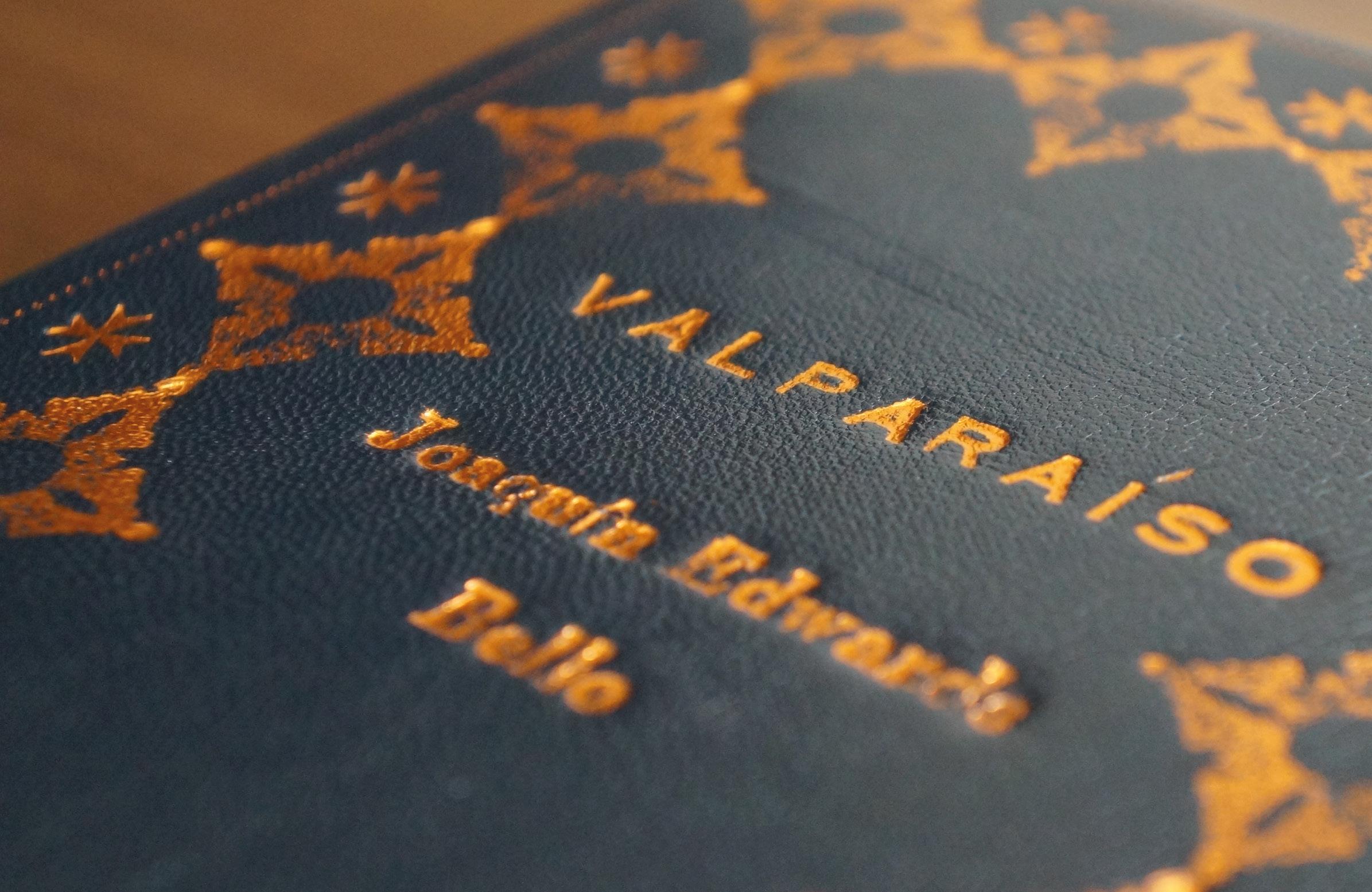


“Nuestro norte es el Sur. No debe haber norte, para nosotros, sino por oposición a nuestro Sur. Por eso ahora ponemos el mapa al revés, y entonces ya tenemos justa idea de nuestra posición, y no como quieren en el resto del mundo. La punta de América, desde ahora, prolongándose, señala insistentemente el Sur, nuestro norte”. (Joaquín Torres García, 1941).
Cambiar la cartografía mental, acercarnos y observar aquel lejano Sur como nuestro cercano Norte, nos lleva obligatoriamente a detenernos y percibir este trazado, este camino, esta huella, como un paso necesario a dar.
La Patagonia, como territorio geográfico protagónico, convoca a tiempos ancestrales, tiempos naturales, tiempos en los cuales el mismo tiempo se dispone a su propio ritmo.
La magnitud de los paisajes, flora y fauna son presentados de manera orgánica a través de sus dieciséis protagonistas que configuran nuestro Norte – Sur Patagonia. Personas que han decidido convivir en esta región, adaptándose a un clima, muchas veces hostil, y a la necesaria colaboración y homeostasis en su comunidad.
Mujeres, hombres, niños, familias, migrantes e inmigrantes, emprendedores y habitantes que viven en estas latitudes, han logrado sostener de manera equilibrada, y con ayuda de la tecnología, sus proyectos personales y una particular filosofía de vida que promueve el respeto por la naturaleza, el uso justo y mesurado de los recursos y una economía circular que les ha permitido adaptarse de manera natural a la Patagonia.
En los últimos 20 años, tanto en Chile como en Latinoamérica, la tendencia de ir en búsqueda de la memoria material e histórica en diversas comunidades ha propiciado descubrir múltiples materiales, técnicas y procesos que estaban atesorados en manos de artesanos, artífices y docentes esperando ser transmitidos y compartidos a las nuevas generaciones.
Norte – Sur camina en aquel sentido. La manufactura con la cual se confeccionaron las tapas de la edición corresponden a papel reciclado tratado y preparado estructuralmente para el volumen, compartiendo todas el mismo sentido en su brújula: direccionar en su contenido la riqueza de la naturaleza y de los habitantes que allí cohabitan.
La edición en papel reciclado se realizó en su totalidad con hojas de Eucaliptus y árboles nativos de la V región de Chile a manos de nuestros colaboradores de Inventando Papeles, una pieza única en su edición.
El proceso respetuoso en la recolección de materias primas marca la pauta en la nueva manera de relacionarse con la encuadernación, los materiales y sus procesos. La fibra del papel es cuidadosamente tratada y pasa por diversas operaciones, tales como macerado, trozado, calentado y prensado, cuidando mantener un equilibrio constante con los elementos de base –agua, fuego, aire y tiempo–, para posteriormente someterse a un tratamiento de entintando natural. Finalmente, obtenemos la materia prima para proceder en la confección de la tapa y estampe figurativo en dorado de nuestro mapa invertido.
De esta manera, pretendemos acercarnos a los métodos tradicionales en la confección del libro e incorporar elementos modernos en su configuración y diseño. La ornamentación principal en la tapa corresponde al diseño proyectado por Alejandro Marambio, que
posteriormente se fundió en bronce y se convirtió en un cuño genuino a manos del grabador chileno Salvador Enzo.
El volumen total del libro se confeccionó bajo aquella premisa: que el tiempo tome protagonismo en sus diversos procesos. Cada detalle se elaboró bajo los criterios y estándares de la encuadernación ortodoxa: volumen en costura clásica, hoja de guarda y tapa suelta con material reciclado en papel.

Al abrir el volumen y encontrarse en la hoja de guarda con la geografía invertida del territorio de todos los protagonistas del libro, sumado al trazo y diseño de su fauna y geografía, se presenta, en síntesis ideográfica, lo que el libro promueve: la naturaleza como protagonista.
El trabajo de arte presentado comulga con la génesis del libro. Tributar y resignificar la importancia del oficio y con ello a diversas técnicas del pasado y presente, como el dibujo a mano alzada, la monocopia, la digitalización de imagen y el uso de scanner, montaje y aplicación de diversos programas digitales en el tratado final de la hoja de guarda.
Es, metafóricamente, la tierra de los protagonistas que se presentan a través de dos plataformas y vincula pasado, presente y futuro en un nuevo formato de edición que une materialmente lo que consideramos se debe promover, los Códigos QR y las Fibras de hojas en papel, lo análogo y digital.
Norte – Sur Patagonia se presenta como una propuesta humana, reflexiva y contingente. Promueve no sólo la forma y uso en el tratamiento material del libro foto-álbum, sino que también una nueva perspectiva en el quehacer editorial.
“Our north is the South. There should be no north, for us, but in opposition to our South. That is why we now turn the map upside down, and then we have a fair idea of our position unlike what they want in the rest of the world. The tip of America, from now on, prolonging itself, insistently points to the South, our north”. (Joaquín Torres García, 1941).
Changing the mental cartography, approaching and observing that distant South as our near North, unavoidably leads us to stop and perceive this route, this path, this track, as a necessary step to take.
Patagonia, as a protagonist geographic territory, summons ancestral, natural times, times in which time itself is arranged at its own rhythm.
The magnitude of the landscapes, flora and fauna are presented in an organic way through sixteen protagonists that make up our Norte Sur Patagonia. People that have decided to live in this region by adapting to a climate, many times hostile, and to the necessary collaboration and homeostasis in their community.
Women, men, children, families, migrants and immigrants, entrepreneurs and inhabitants living in these latitudes have managed to keep, with the help of technology, their personal projects and a particular philosophy of life that promotes respect for nature, the fair and measured use of resources and a circular economy, which has allowed them to adapt naturally to Patagonia.
In the last 20 years, both in Chile and in Latin America, the tendency to search for tangible and historical memory in different communities has led to the discovery of multiple materials, techniques and processes that were treasured in the hands of artisans, craftspeople and teachers, waiting to be transmitted and shared with new generations.
Norte Sur walks in that direction. The manufacture with which the covers of the edition were made corresponds to recycled paper treated and prepared structurally for the volume, all of them sharing the same sense in their compass: to address in their content the richness of nature and of the inhabitants who co-inhabit there.
The recycled paper edition was made entirely with Eucalyptus leaves and native trees from the V region of Chile, by the hands of our collaborators of Inventando Papeles, which makes it a unique piece in its edition.
The respectful process in the collection of raw materials sets the standard in the new way of approaching bookbinding, materials and processes. The paper fiber is carefully treated, it goes through operations such as maceration, cutting, heating and pressing, but safeguarding the constant balance with the basic elements –water, fire, air and time– to later undergo a natural inking treatment. Finally, this becomes our raw material to proceed in the confection of the cover and figurative stamping in gold of our inverted map.
This way, we intend to approach the traditional methods in the book’s confection, incorporating modern elements in its configuration and design. For that reason, the main ornamentation on the cover corresponds to the design projected by Alejandro Marambio, which was later cast in bronze with a genuine stamp by the Chilean engraver
The entire book volume was made under that premise: time takes center stage in its various processes. Every detail was elaborated under the criteria and standards of orthodox binding, from the volume in classic stitching to the flyleaf and loose cover with recycled paper material.
When opening the volume and finding on the flyleaf the inverted geography of the territory of all the protagonists of the book, added to the outline and design of the fauna and geography, it is presented, in ideographic synthesis, what the book promotes: nature as the protagonist.
The artwork presented is in line with the genesis of the book. It is a tribute and resignification to the importance of the craft and with it to various techniques of the past and present, such as the freehand drawing, the monocopy, the image digitalization and the use of scanner, assembly and application of various digital programs in the final treatment of the flyleaf.
It is, metaphorically, the land of the protagonists who are presented through two platforms and connect past, present and future in a new editing format that we believe should be promoted, QR codes and fibers of sheets of paper, linking the analog and digital.
Norte Sur Patagonia is presented as a humane, reflexive and contingent proposal. It promotes not only the form and use in the material treatment of the photo-album book, but also a new perspective in the editorial work.








Viaje en Poesía es el primer libro - poemario de la artista franco española Amelie Lapeli, la cual en su recorrido por Latinoamérica escribió estas líneas con una profunda carga personal y vivencial e integró elementos simbólicos en su poesía. En su trabajo no sólo expresa la comunión de su trazo con el escenario sudamericano, sino que también la de una fotografía íntima de su vida.
En palabras de Ladislao Cardoso:
“(…) mis sentidos dejaron de ser filtros y se hicieron puertas por los que pude disfrutar de la belleza, de la poesía y del amor. Más hubo una voz inolvidable, que adorna aún los días con su canto, que bailó por las tierras latinoamericanas, se llenó de la cosmovisión andina y hoy (a la fecha de este escrito) aún esperamos su regreso, todas las personas que han guardado dentro de sí, un recuerdo suyo.”
Con ilustraciones de Alejandro Marambio, edición por Franco Caballero, la colaboración del artista boliviano Ladislao Cardoso, la corrección y revisión al francés del texto por Blanche Turck y las manos de todo el estudio – Carolina Chacón, Ricardo Vásquez y Leonardo Cancino–. Es nuestra 4ta publicación y se incorporó, en esta ocasión, elementos orgánicos a la tapa del volumen. La edición en papel reciclado se realizó en su totalidad con hojas de Eucaliptus y árboles nativos de la V región de Chile a manos de nuestros colaboradores de Inventando Papeles, una pieza única en su edición.
El proceso respetuoso en la recolección de materias primas marca la pauta en la nueva manera de relacionarse con la encuadernación, los materiales y sus procesos. La fibra del papel es cuidadosamente tratada y pasa por diversas operaciones, tales como macerado, trozado, calentado y prensado, cuidando mantener un equilibrio constante con los elementos de base –agua, fuego, aire y tiempo–, para posteriormente someterse a un tratamiento de entintando natural. Finalmente, obtenemos la materia prima para la cobertura de Viaje en Poesía.
Viaje en Poesía is the first book of poems by Amelie Lapeli, a French-Spanish artist, who in her journey through Latin America wrote these lines with a deep personal and experiential charge, integrating symbolic elements in her poetry. In this work she not only expresses the communion of her stroke with the South American scenario, but also that of an intimate photograph of her life.
In the words of Ladislao Cardoso:
“(...) my senses ceased to be filters and became doors through which I could enjoy beauty, poetry and love. Yet there was an unforgettable voice, that still adorns the days with her singing, that danced through the Latin American lands, filled with the Andean cosmovision and today (as of this writing) we still await her return, all the people who have kept within themselves, a memory of her.”
With illustrations by Alejandro Marambio, edition by Franco Caballero, the collaboration of the Bolivian artist Ladislao Cardoso, the French correction and revision of the text by Blanche Turck and the hands of the whole studio –Carolina Chacón, Ricardo Vásquez and Leonardo Cancino–. This is our 4th publication and on this occasion organic elements were incorporated into the cover of the volume.
The recycled paper edition was made entirely with Eucalyptus leaves and native trees from the V region of Chile by our collaborators of Inventando Papeles, a unique piece in its edition.
The respectful process in the collection of raw materials sets the
standard in the new way of relating to bookbinding, materials and processes. The paper fiber is carefully treated, it goes through operations such as maceration, cutting, heating and pressing, but safeguarding the constant balance with the basic elements –water, fire, air and time– to later undergo a natural inking treatment. Finally, we get our raw material for the coverage of Viaje en Poesía.

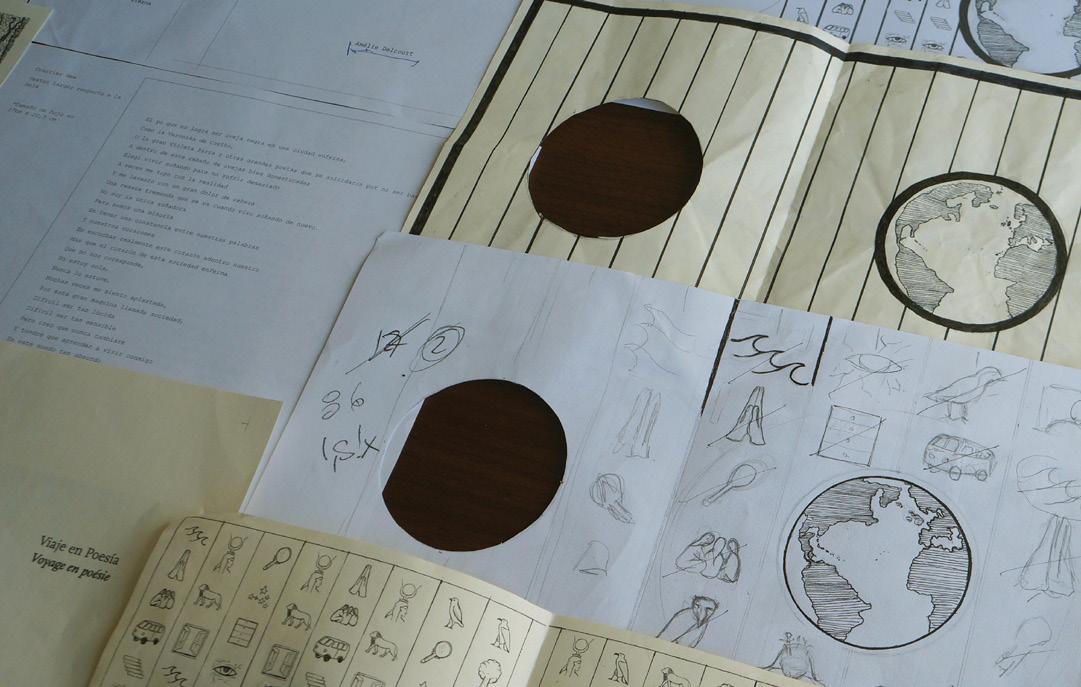






Lenguas y Engranajes es la tercera publicación como estudio y nuestra primera novela u obra narrativa. De puño, tinta y sangre por Domingo Achondo Bardavid (Santiago de Chile, 1993).
En palabras de nuestra prologuista, Masiel Zagal:
“(...) Uno de los elementos más llamativos y valientes de esta obra narrativa es precisamente que no se limita sólo a ese género (el narrativo), sino que usándolo como hilo conductor nos lleva a transitar por la fractura que separa y une a los distintos géneros literarios. Aquí vemos una ruptura en la categorización que la academia ha hecho en cuanto a las tantas diversas formas de contar una historia, y vemos un engranaje subversivo y coherente entre lo lírico, lo narrativo y lo dramático.”
La edición física ilustra análoga y simbólicamente la esencia de Lenguas y Engranajes, siendo el ondular de la lengua y el engranaje los movimientos cíclicos y naturales de los personajes de la novela que se extienden en la hoja de guarda. De tamaño 15 x 21 cm,. se ajusta a los espacios mínimos para albergar un libro. La cobertura y diseño se confeccionaron en materiales que permiten vincular su singular estética en dorado con la perpetuación de los procesos clásicos de la encuadernación.
Lenguas y Engranajes is our third publication and our first novel. From fist, ink and blood by Domingo Achondo Bardavid (Santiago de Chile, 1993).
In the words of our prologue writer, Masiel Zagal:
“(...) One of the most striking and courageous elements of this narrative work is precisely that it is not limited only to that genre (narrative), but using it as a guiding thread, it takes us through the fracture that separates and unites the different literary genres. Here we see a rupture in the categorization that the academy has made regarding the many different ways of telling a story, and we see a subversive and coherent interweaving of the lyrical, the narrative and the dramatic.”
The physical edition illustrates the essence of Lenguas y Engranajes analogously and symbolically, with the undulation of the tongue and the gears that inspired its title being the cyclical and natural movements of the novel’s characters spread out on the flyleaf. The 15 x 21 cm size meets the minimum spaces for a book. The cover and design were made in materials that allow linking its unique gilded aesthetics with the perpetuation of classic bookbinding processes.





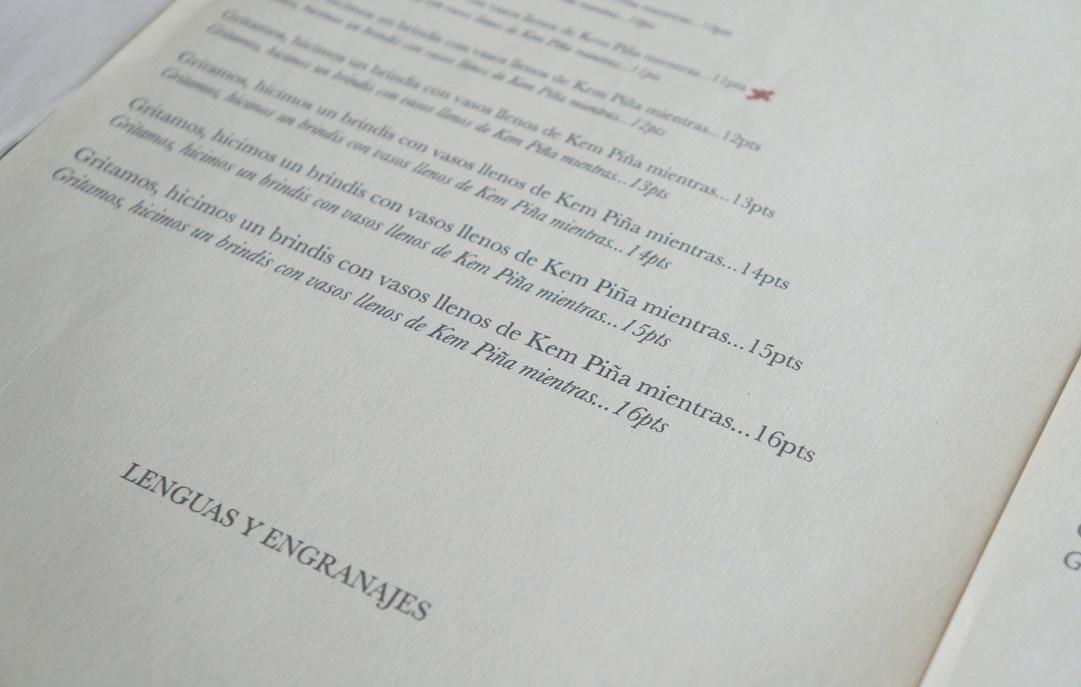


Vivencias de una experiencia es un texto narrativo biográfico que publicamos de manera privada para alguien que creció y vivió parte de su vida en la histórica ciudad de Sewell, en la cordillera de la VI región de Chile. Nuestro trabajo consistió en editar, diagramar, imprimir y luego encuadernar 50 copias numeradas, con el propósito que cada integrante de la familia y amigos contara con una copia. En más de 200 páginas, 50 fotografías y escrito narrativo con cartas originales y documentación histórica, se pretendió dar forma al corpus vivencial de esta experiencia.
El eje estético y visual consistió en incorporar a Sewell (Patrimonio de la humanidad de la UNESCO) como protagonista iconográfico del libro, proyectando en la hoja de guarda, y en el diseño-cuño principal de la tapa, la esencia de lo que creemos forma parte fundamental de nuestra historia.
El trabajo de encuadernación se realizó en tapa dura, se usaron dos tipos de papeles en la totalidad del volumen y se integraron las fotografías –para su exposición en alta calidad– en papel Bond de 105 g/m2 y el escrito en papel ahuesado marfil de 85 g/m2, para así otorgarle amplitud en los materiales del volumen. A su vez, el diseño principal de la tapa proyecta parte de Sewell, diseño trazado a mano alzada que luego se solicitó fundir en cuño de bronce al artesano Mauricio Rodríguez, para poder vincular la esencia del libro con la hoja de guarda y ornamentación en tapa en folia dorada.
Vivencias de una experiencia is a biographical narrative text that we published privately for someone who grew up and lived part of his life in the historic town of Sewell, in the mountain range of the VI region of Chile. Our work consisted of editing, diagramming, printing and then binding 50 numbered copies, so that each member of the family and friends would have one. In more than 200 pages, 50 photographs and narrative writing with original letters and historical documentation, we tried to give shape to the living corpus of this experience.
The aesthetic and visual axis consisted of incorporating Sewell (a UNESCO World Heritage Site) as the iconographic protagonist of the book, projecting on the flyleaf and in the main design of the cover the essence of what we believe is a fundamental part of our history.
The binding work was done in hard cover, using two types of paper for the entire volume, integrating the photographs –for high quality exhibition– on 105 g/m2 bond paper and the writing on 85 g/m2 ivory paper, thus giving width to the volume’s materials. At the same time, the main design of the freehand cover projects part of Sewell, which was then cast in bronze by the artisan Mauricio Rodriguez, thereby linking the essence of the book with the flyleaf and ornamentation on the cover made freehand in golden foil.
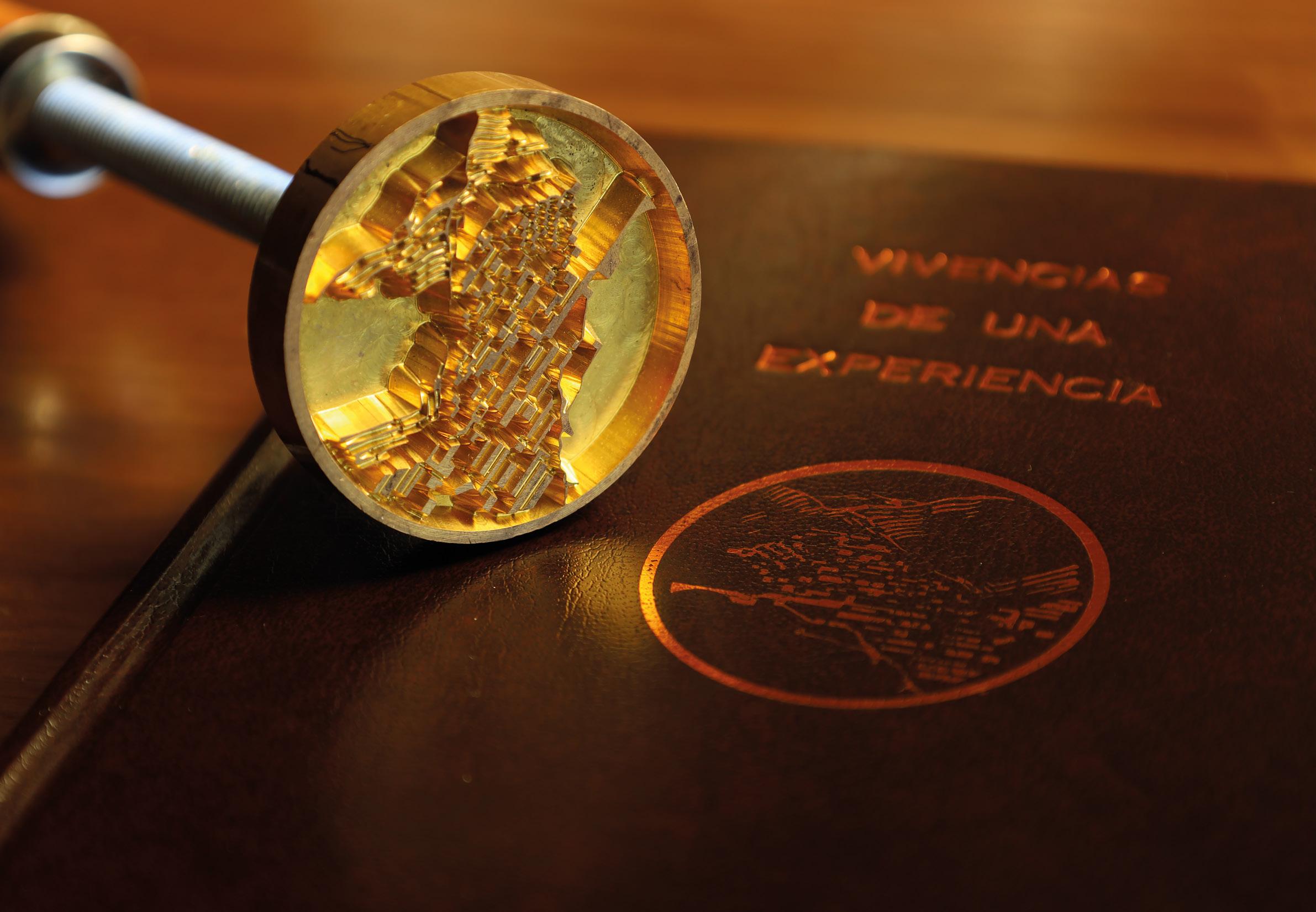




Desde sus inicios, la encuadernación ha sido un espacio social vinculado a la artesanía y al legado de maestros y artesanos que han transmitido su conocimiento desde hace cientos de años. Bajo esta perspectiva histórica, nuestro propósito se liga a la tradición del oficio, impartiendo talleres en escuelas e institutos y el desarrollo de talleres especializados en universidades.
A su vez, dictamos cursos de manera particular a través de los programas de Casa Taller, cuyo propósito es otorgar las herramientas materiales, físicas y teóricas para aprender encuadernación desde el hogar. Asimismo, se han realizado laboratorios grupales y gratuitos online para que cualquier persona que pueda acercarse a las bases históricas y prácticas de la encuadernación artística.
Since its beginnings, binding has been a social space bound to craftwork and to the legacy of masters and craftspeople who have left their legacy for hundreds of years. Under this historical perspective, our purpose is linked to the tradition of the craft, teaching workshops in schools and institutes, and currently with the development of specialized workshops in universities.
At the same time, we give courses privately through the Casa Taller (workshop house) programs, with the purpose of providing the material, physical and theoretical tools to learn bookbinding at home. In addition, free online group laboratories allow anyone to approach the historical and practical bases of artistic bookbinding.




Tiene como propósito principal acercar la encuadernación a todas las personas que se encuentren interesadas en aprender este centenario oficio. Nace desde la necesidad de poder entregar los conocimientos, técnicas y materiales a aquellos amantes del oficio que deban asistir a distancia, o bien porque simplemente desean aprender desde su casa, y así puedan involucrarse a través de talleres online con envío de materiales hasta su casa.
Es la ventana a nuevos aprendizajes, abordajes y técnicas sobre la encuadernación y edición en su amplio espectro. Es una invitación a reorganizar parte del espacio personal a un taller en donde se podrá desplegar las destrezas a un proyecto personal de edición y/o encuadernación artística.
Se incluye desde laboratorios en técnicas específicas como tapa suelta, costura americana, tratamiento de diversos materiales orgánicos para tapas, pasando por el abordaje integral de los procesos necesarios para concretar un volumen, hasta la profundización en estilos de encuadernación en cuero y tratamiento de materiales orgánicos y sintéticos.
Its main purpose is to bring binding to all the people who are interested in learning this centenary craft. It was born from the need to deliver knowledge, techniques and materials to many lovers of the craft that due to the distance, or because they just prefer to learn from home, can get involved through online workshops with shipping of materials to their home.
It is the window to new learning, approaches and techniques on bookbinding and publishing in its broad spectrum. It is an invitation to reorganize part of the personal space to a workshop where you can deploy the skills to a personal project of editing and / or artistic binding.
From laboratories in specific techniques such as loose cover, American stitching, treatment of various organic materials for covers; through the comprehensive approach of the processes necessary to materialize a volume; to the in-depth study of leather binding styles and treatment of organic and synthetic materials.
Desde sus inicios, la línea gráfica del estudio pretende destacar elementos simbólicos y materiales de la encuadernación; integrando en el desarrollo y creación de los afiches, ilustraciones y propuestas conceptuales de nuestros proyectos, imágenes que representen en primer lugar las herramientas, instrumentos y materiales que se utilizan en la realización manual de nuestros trabajos; como también diseños, ornamentaciones y un ideario común latinoamericano, rescatando la tradición folclórica e histórica de nuestros pueblos originarios.
A manos de Alejandro Marambio, quien ha sido el intérprete y creador de este lenguaje visual a través de las técnicas de la monocopia, linografía, ilustración y dibujo a mano alzada; vincular no solo la manufactura de nuestros proyectos, sino que también aportar una nueva concepción en el quehacer gráfico.
From the beginning, the graphic line of the studio aims to highlight symbolic and material elements of bookbinding, integrating in the development and creation of posters, illustrations and conceptual proposals of our projects images that represent, first of all, the tools, instruments and materials used in the manual realization of our work, as well as designs, ornamentations and a common Latin American ideology, in order to rescue the folkloric and historical tradition of our native
peoples.
At the hands of Alejandro Marambio, who has been the interpreter and creator of this visual language through the techniques of monoprinting, linography, illustration and freehand drawing, not only the manufacture of our projects is connected, but also brings a new conception in the graphic work.
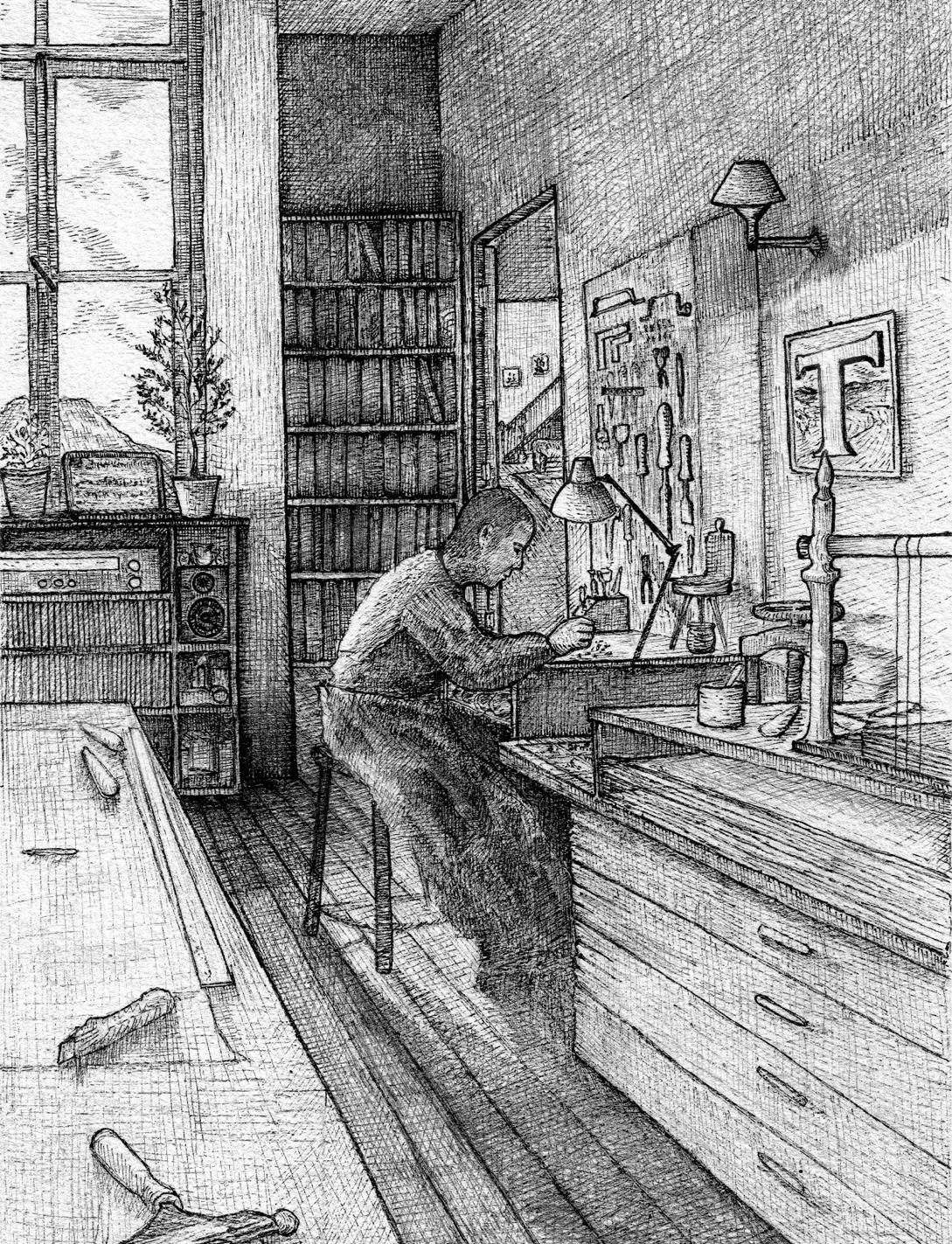







La encuadernación, como arte, mantiene el estatus y tradición de ser un testigo en cada transición histórica de la humanidad. Desde los papiros, pasando por los códices y hasta la reproducción masiva de libros desde el siglo XV, ha permitido contar con un nutrido catálogo de estilos de encuadernación, técnicas decorativas y procesos materiales que se adaptan a cada siglo.
En un principio fueron los papiros y tablas, después la vitela (pergamino) y más tarde el uso profesional y técnico del cuero desde el medioevo; una evolución que ha generado múltiples adaptaciones a los sustratos, herramientas y materiales en la confección de un libro.
Nuestros insumos de encuadernación provienen de industrias papeleras y de cartonaje nacional, así como también el uso de papeles exclusivos importados desde España, Francia, Colombia, Brasil y México.
Mientras tanto, para la confección de proyectos en ediciones especiales y de laboratorio, los artistas permanentes que nos proveen de estos insumos son Inventando Papeles (V región de Chile), Alonso Jerez (Santiago de Chile) y Paula Fibras (Argentina).
Binding, as an art, maintains the status and tradition of being a witness in every historical transition of humankind. From the papyrus, through the codices and the massive reproduction of books since the 15th century, it has allowed for a rich catalog of bookbinding styles, decorative techniques and material processes that adapt to each century.
In the beginning it was papyrus and boards, then vellum (parchment), up to the professional and technical use of leather since the Middle Ages, which has generated multiple adaptations to the substrates, tools and materials in the making of a book.
Our binding supplies come from national paper and cardboard industries, as well as the use of exclusive papers imported from Spain, France, Colombia, Brazil and Mexico.
Meanwhile, for the confection of projects in special and laboratory editions, the permanent artists that provide us with these supplies are Inventando Papeles (V region of Chile), Alonso Jerez (Santiago de Chile) and Paula Fibras (Argentina).
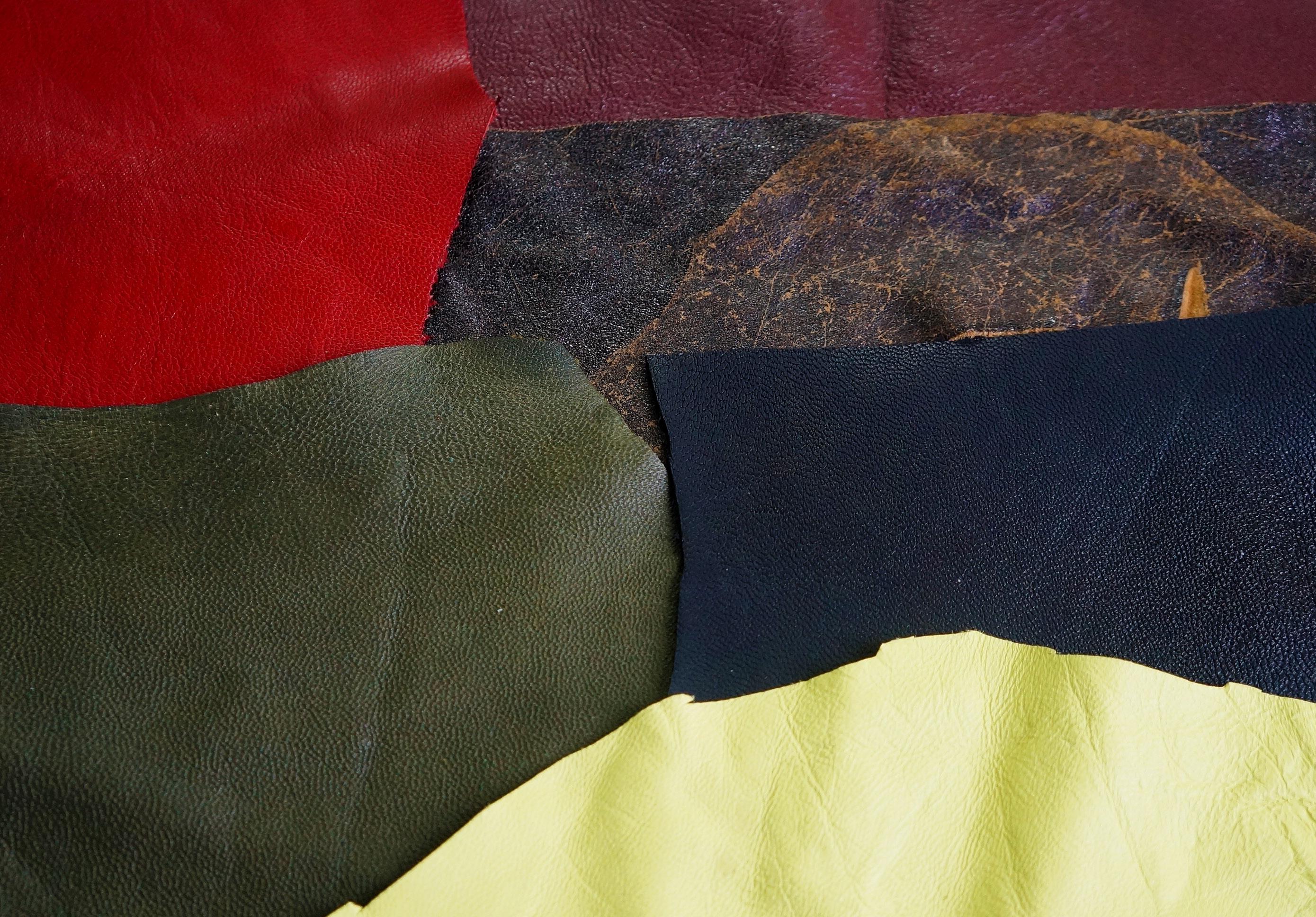



Victoria Aguirre
Región de Valparaiso,








Equipo Tralka Estudio
Leonardo Cancino - Encuadernador, dorador y prensista | Psicólogo Alejandro Marambio - Diseñador, ilustrador e idea conceptual de arte | Diseñador Carol Chacón - Encuadernadora | Profesora de inglés y traductora Ricardo Vásquez - Encuadernador | Arquitecto
Franco Caballero - Editor, gestión literaria | Profesor de lenguaje Victoria Flores - Editora, gestora literaria internacional | Traductora de francés e inglés
Contacto Europa
Stephan Gartner www.nortesurpatagonia.com www.linkedin.com/in/spagartner/ gartnerstephane@gmail.com +32456114110
Bruselas, Bélgica
Tralka Estudio Team
Leonardo Cancino - Bookbinder, gilder and pressman | Psychologist Alejandro Marambio - Designer, illustrator and conceptual art idea | Designer Carol Chacón - Bookbinder | English teacher and translator Ricardo Vásquez - Bookbinder | Architect
Franco Caballero - Editor, literary manager | Language teacher
Victoria Flores - Editor, international literary | French and english translator
Europe Contact Stephan Gartner www.nortesurpatagonia.com www.linkedin.com/in/spagartner/ gartnerstephane@gmail.com +32456114110
Brussels, Belgium
Tralka Estudio

Estudio de encuadernación artística, oficio y convergencias de ideas, propuestas y creativdidad.

Study of artistic binding. Convergences of ideas, proposals and creativity. www.tralkaestudio.com contacto@tralkaestudio.com +56993069821
Talca, Región del Maule, Chile.
